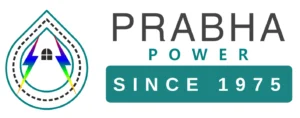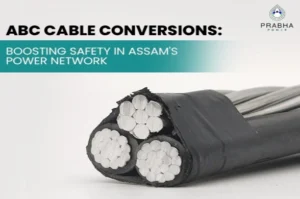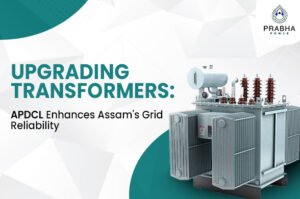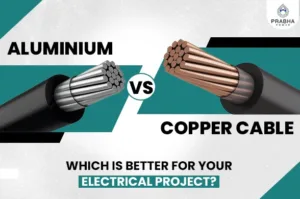
In construction and infrastructure, small components often play crucial roles. GI pole clamps are prime examples – versatile fasteners providing stability and support across various projects, from skyscrapers to solar farms. These unassuming devices are vital for ensuring structural safety and longevity.
GI pole clamps have diverse applications across industries, from traditional construction to telecommunications and renewable energy. By examining their widespread use, we’ll see why they’ve become indispensable tools for engineers, contractors, and project managers.
In this blog, we’ll explore different types of GI pole clamps, including STP, PSC, and AB Cable Clamps, as well as their applications and advantages. Each variant has unique features suited for specific applications, enhancing project efficiency. Understanding these differences is crucial for choosing the right clamp for your needs.
What are GI Pole Clamps?
GI pole clamps, short for Galvanized Iron pole clamps, are specialised fastening devices designed to secure poles, pipes, cables, and other cylindrical objects. These robust clamps are typically made from high-quality galvanized steel, providing excellent corrosion resistance and durability, making them suitable for indoor and outdoor applications.
The primary function of GI pole clamps is to create secure connections between poles and supporting structures or between multiple poles. They offer a non-permanent, adjustable solution allowing easy installation, removal, and repositioning as needed. This flexibility makes them invaluable in various scenarios, from permanent installations to temporary setups.
GI pole clamps come in different sizes and designs to accommodate various pole diameters and load requirements. Their galvanized finish not only protects against rust and corrosion but also enhances their aesthetic appeal, making them suitable for visible installations.
Types of GI Pole Clamps
-
STP Pole Clamp
The STP Pole Clamp, or Single Top Plate Pole Clamp, is a popular choice for many applications. Key features include:
- Single plate design for straightforward installation
- Suitable for lighter loads and smaller diameter poles
- Often used in telecommunications and lighting installations
- Provides a secure grip while allowing for easy adjustments
-
PSC Pole Clamp
The PSC Pole Clamp, or Pole Strap Clamp, offers a different approach to pole fastening:
- Utilizes a strap mechanism for enhanced grip
- Ideal for larger diameter poles and heavier loads
- Commonly used in utility pole installations and industrial applications
- Provides excellent stability and load distribution
-
AB Cable Clamp
The AB Cable Clamp, while not strictly a pole clamp, is often used in conjunction with pole installations:
- Designed specifically for securing cables and wires
- Features a two-piece design for easy installation and removal
- Available in various sizes to accommodate different cable diameters
- Often used in electrical and telecommunications installations
Each type of clamp has its unique advantages, and the choice depends on factors such as the pole diameter, load requirements, and specific application needs.
Applications of GI Pole Clamps
GI pole clamps find use in a wide array of industries and applications, showcasing their versatility and importance:
-
Construction Industry
- Scaffolding support: Securing temporary structures during building projects
- Formwork assembly: Holding concrete forms in place during pouring and curing
- Pipe installations: Fastening plumbing and HVAC systems to building structures
-
Telecommunications
- Antenna mounts: Securing communication antennas to towers and buildings
- Cable management: Organizing and supporting cable runs along poles and structures
- Equipment installation: Mounting transmitters, receivers, and other telecom devices
-
Electrical Utility Sector
- Transformer mounting: Securing transformers to utility poles
- Insulator attachment: Fastening insulators for power line support
- Street lighting: Installing and adjusting street lamps on poles
-
Renewable Energy
- Solar panel installations: Mounting solar panels on support structures
- Wind turbine components: Securing various parts of wind turbine towers
- Biomass plant construction: Supporting piping and equipment in biomass facilities
-
Transportation Infrastructure
- Traffic signal mounting: Installing and adjusting traffic lights
- Road sign installation: Securing signage to poles along roadways
- Railway electrification: Supporting overhead power lines for electric trains
-
Agriculture
- Irrigation systems: Mounting sprinklers and pipes in large-scale farming
- Greenhouse construction: Supporting structure and equipment in controlled environments
- Livestock fencing: Securing electric fencing components
-
Event Management
- Temporary structures: Erecting stages, tents, and pavilions for outdoor events
- Lighting and sound equipment: Mounting audiovisual gear for performances
- Crowd control barriers: Setting up and securing temporary fencing
-
Marine Applications
- Dock construction: Securing floating docks and marina structures
- Boat canopies: Supporting shade structures on vessels
- Navigational aids: Installing buoys and markers in waterways
Advantages of Using GI Pole Clamps
The widespread adoption of GI pole clamps across various industries is a testament to their numerous benefits:
-
Durability and Longevity
- Galvanized finish provides excellent corrosion resistance
- High-quality steel construction ensures long-term structural integrity
- Able to withstand harsh environmental conditions, including UV exposure and extreme temperatures
-
Versatility
- Compatible with a wide range of pole diameters and materials
- Suitable for both permanent and temporary installations
- Can be used in various orientations (vertical, horizontal, angled)
-
Easy Installation and Adjustment
- No specialized tools are required for most installations
- Quick to mount and dismount, saving time on job sites
- Allows for easy repositioning and fine-tuning of pole alignment
-
Cost-Effectiveness
- Reusable nature reduces long-term expenses
- Minimizes the need for permanent modifications to structures
- Reduces labour costs due to simple installation procedures
-
Safety Enhancement
- Provides secure fastening, reducing the risk of structural failures
- Allows for proper load distribution, preventing stress concentrations
- Facilitates regular inspections and maintenance of pole-mounted equipment
-
Customisation Options
- Available in various sizes to suit different project requirements
- Can be combined with other hardware for specialized applications
- Some models offer adjustable clamping force for precise installations
-
Aesthetic Considerations
- Clean, professional appearance suitable for visible installations
- Galvanized finish blends well with many architectural styles
- Helps maintain a uniform look in large-scale pole installations
-
Regulatory Compliance
- Meets industry standards for safety and performance
- Helps projects comply with building codes and regulations
- Facilitates obtaining necessary permits and approvals
Choosing the Right GI Pole Clamp
Selecting the appropriate GI pole clamp for your project involves considering several factors:
- Pole Diameter: Ensure the clamp size matches the diameter of the pole or pipe you’re working with.
- Load Requirements: Consider the weight and force the clamp will need to support.
- Environmental Conditions: For outdoor applications, choose clamps with appropriate weather resistance.
- Installation Type: Determine whether you need a permanent or temporary solution.
- Compatibility: Ensure the clamp is compatible with other hardware and equipment in your setup.
- Regulatory Requirements: Check if there are specific standards or certifications required for your application.
- Budget Constraints: Balance cost considerations with the quality and durability needed for your project.
Maintenance and Care
To ensure the longevity and optimal performance of GI pole clamps:
- Regularly inspect clamps for signs of wear, corrosion, or damage
- Keep clamps clean and free from debris that could affect their performance
- Periodically check and retighten clamps, especially in high-vibration environments
- Apply appropriate lubricants to moving parts as recommended by the manufacturer
- Replace clamps that show significant wear or damage to maintain safety standards
Future Trends in GI Pole Clamp Technology
As industries evolve, so too does the technology behind GI pole clamps. Some emerging trends include:
- Smart clamps with integrated sensors for load monitoring and predictive maintenance
- Lightweight, high-strength materials for improved portability and load capacity
- Enhanced corrosion-resistant coatings for extreme environments
- Modular designs for greater versatility and customisation
- Eco-friendly manufacturing processes and materials
Conclusion
GI pole clamps are more than just simple fasteners; they are crucial components in the infrastructure that shapes our world. From construction sites to renewable energy farms, these versatile devices play a vital role in ensuring the safety, stability, and efficiency of countless projects.
As we’ve explored the types, applications and advantages of GI pole clamps, it’s clear that their importance in various industries cannot be overstated. Whether you’re a construction professional, an engineer, or a project manager, understanding the uses and benefits of these clamps can lead to more effective and efficient project outcomes.
Companies like Prabha Power are at the forefront of providing high-quality GI pole clamps and related products in Guwahati, Assam, ensuring that industries have access to the best materials for their specific needs. As technology advances and new challenges arise, the humble GI pole clamp will undoubtedly continue to evolve, adapting to meet the changing demands of our built environment.
Ready to elevate your next project with the right GI pole clamps? Don’t hesitate to reach out to industry experts who can guide you in selecting the perfect clamps for your specific needs. Your success story could be just a clamp away!






